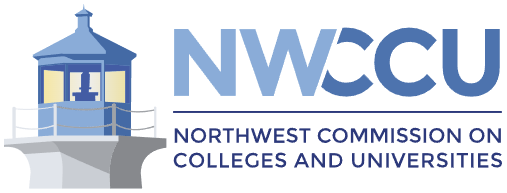EHHD_ED_GR_EdD_AHE_REPORT_2016-17
Annual Assessment Report
Academic Year: 2016-17
Department: Education
Program(s): Adult and Higher Education, Doctorate of Education
1. What Was Done
5 doctoral students sat for written and oral comprehensive examinations, 4 students defended dissertation proposals, and 1 students defended final dissertations. We also had 3 PhD students defend their dissertations.
2. What Data Were Collected
Pass rates were collected to assess the program: All 5 students who sat for comprehensive examinations passed both the written and oral exams, leading to a 100% pass rate. 4 defended proposals, 100% pass rate. One student who defended their final dissertations passed, leading to a 100% pass rate.
3. What Was Learned
Primarily, our decision to not allow students to take their comprehensive exam, schedule a dissertation proposal defense, or schedule a final dissertation defense until the chair feels the student is ready has continued to be validated, and serves as a successful strategy for helping students complete. However, this strategy can increase time to degree with students who require more intensive support in finishing their writing. In the Summer 2017, we implemented a new policy in which students in EDLD 690 Dissertation Credits can earn an “N” rather than a “Pass” or “No Pass.” The “N” represents that the student is working on their dissertation, but may not meet the stated goals agreed upon between the student and faculty advisor. To date, no students have earned an “N.”
The AHE program has hired a new Tenure Track faculty member. We now have four full-time faculty: two who are tenured and two pre-tenured. We have 30 active doctoral students, this is a substantial advising and mentoring load, particularly for the two tenured faculty members. The new tenure track faculty member will contribute to chairing dissertations, thereby reducing the number of advisees for each faculty member.
We have learned that supporting students at a distance requires a combination of high tech and high touch support. Distance students tend to be more engaged through the use of a cohort model as reflected by the success of students who are in the Great Falls cohort. Two members of the Great Falls cohort will defend their dissertation Fall 2017.
The program has had a large uptick in the number of students interested in coming to MSU from outside of Montana. Many of these students are searching for graduate school in highly respected higher education programs. These students are seeking graduate assistantships to support their education financially but also substantively through research and assistantship experiences.
4. How We Responded
To decrease time-to-degree for students who need additional writing support, in 2015-16 we restructured the EDLD 690 Doctoral Thesis course into a structured writing group meeting on a similar weekly schedule to our departmental graduate courses. One program faculty member leads this session to provide time for intensive writing sessions as well as one-on-one feedback on students’ writing. We have maintained this structure for 2016-17. To support our students who are at the dissertation writing phase, we have used virtual classroom technology through WebEx so that students can see and hear their classmates as they discuss progress on their dissertation research.
Second, as a department we changed our admissions calendar for our Ed.D. programs to only review and admit students once per year. Our concern was that students admitted in the spring were less integrated into their programs, and were not succeeding similarly to their classmates who began fall semester. The intent of a single application deadline is to establish a cohort style model that helps students build community among the group that entered their respective doctoral programs together, much like we have experienced with the Great Falls cohort.
In support of this goal, EDU 691 has been implemented this 2016 fall semester to introduce and socialize doctoral students into graduate study. Two sections are offered, one for new Ph.D. students and the other for new Ed.D. students.
To streamline students’ progression toward the dissertation, the program faculty developed a two-year rotation of core Adult and Higher Education courses to ensure that the four core courses are offered frequently enough to allow for students to complete coursework within two years. As well, the department faculty developed a methods course rotation schedule to ensure doctoral students start methods courses upon matriculation, complete courses in a prescribed order, and have access to the methods courses needed in order to facilitate completion.
We are also re-establishing the function and role of the graduate committee. Currently, four faculty members serve on the committee for each doctoral student. This means that each faculty member in AHE either chairs or serves as a committee member for each student. The graduate school policy is that the fourth member of the committee is a nonreader, meaning they are not required to read the students’ dissertation. In the past, all four members have read and responded to the students work. Because of our high advising loads, we are re-establishing the role of the fourth member and designating her as a nonreader. This means that only in the case where there may be a disagreement between the faculty readers about the research will the fourth member read the dissertation and weigh in on the students’ work.
The current deadline for enrollment into the EdD program is April 1. To address growing interest in graduate assistantships, the AHE program has initiated an early preferred deadline (Feb. 1) for those students who want to be considered for a graduate assistantship on campus. This early deadline serves two important functions. First, it allows the AHE program to be nationally competitive for the top students in the field. Second, it allows the program to recruit students from outside of Montana, which in turn, diversifies our students in the program.



